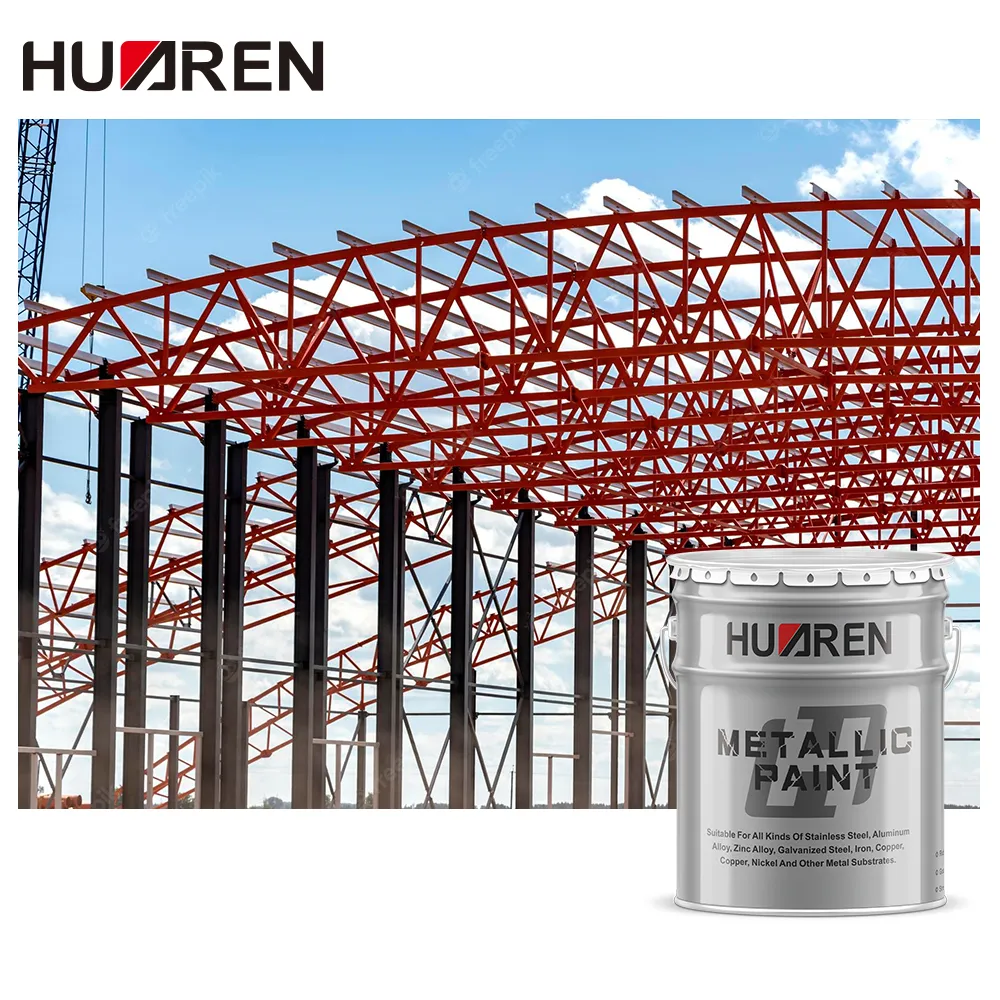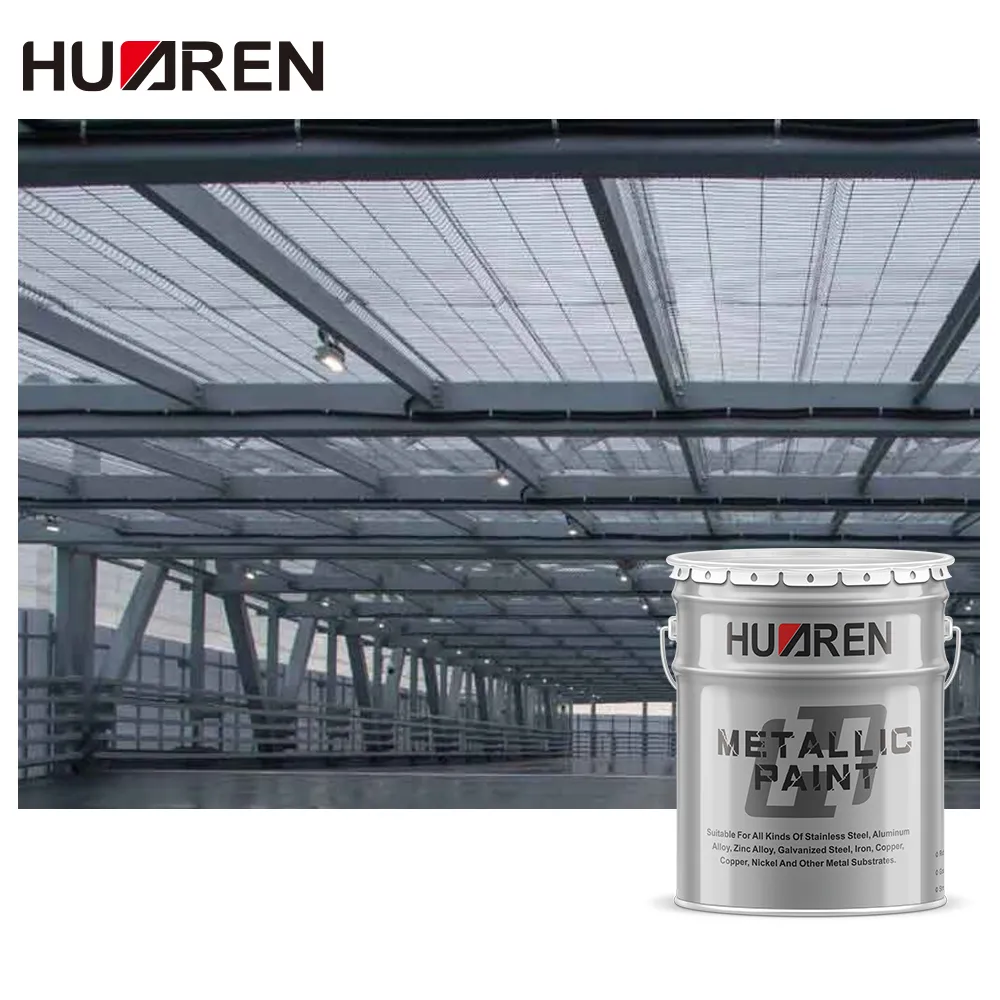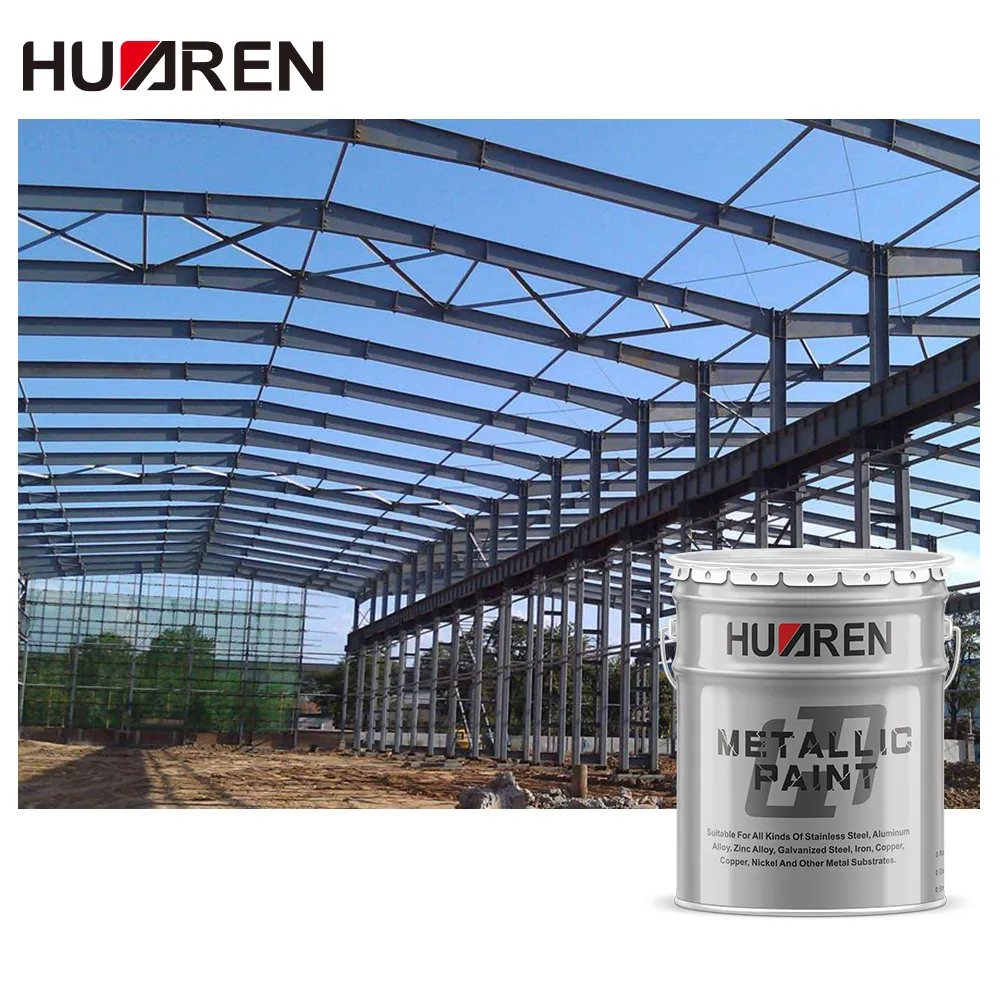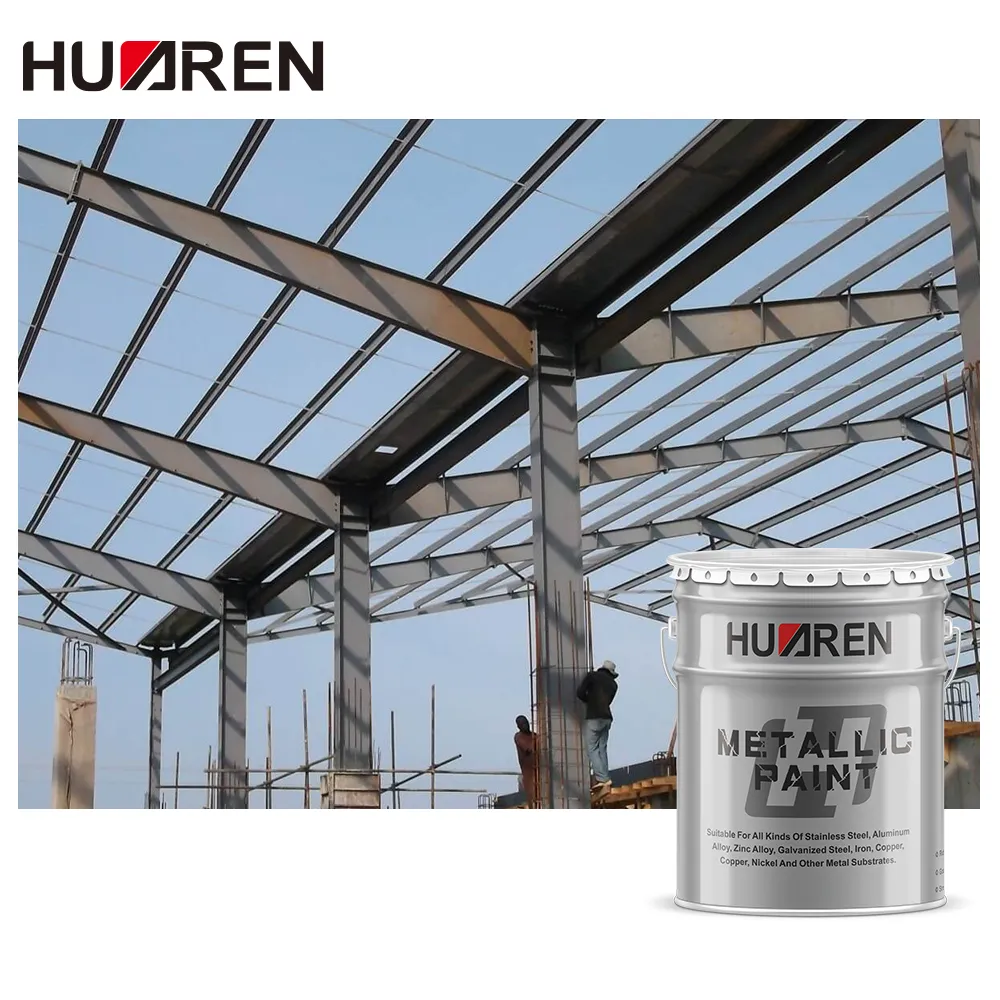Water-based metallic paint is an environmentally friendly paint that has been widely used in metal surface protection in recent years. Compared with traditional oil-based metallic paint, water-based metallic paint is not only environmentally friendly and low in odor, but also has certain corrosion resistance and wear resistance, and is suitable for many fields, such as automobiles, home appliances, furniture, and construction. However, as a relatively new type of paint, whether water-based metallic paint can maintain its original color and appearance under high temperature has become a concern for many users.
Under high temperature conditions, the color change phenomenon of paint is usually closely related to factors such as the composition, chemical properties, curing process, and applicable environment of the paint. So, will water-based metallic paint change color when facing high temperatures? How does it perform under high temperature environments? These issues are of great significance in different application scenarios, especially in some extreme environmental conditions, such as high-temperature industrial production lines, outdoor facilities, etc.
This article will discuss in detail the performance of water-based metallic paint under high temperature conditions, analyze the factors that affect the discoloration of water-based metallic paint, introduce common treatment methods to prevent discoloration, and the scope of use of water based steel paint under high temperature.

What are the components of water-based metallic paint?
Water-based metallic paint is a metal surface coating that uses water as a solvent. Its main ingredients include resin, pigment, filler, additive and water. Compared with traditional oil-based paint, water-based metallic paint has a lower volatile organic compound (VOC) content and almost no harmful gas release, so it has obvious advantages in environmental protection.
The curing method of water-based metallic paint is usually completed by the evaporation of water and chemical reaction, which also means that it dries faster than oil-based paint and does not require too much chemical solvent. This makes water-based metallic paint have a lighter odor during construction and less harm to human health.
The advantages of water-based metallic paint include:
● Good environmental protection: low VOC content, in line with environmental protection requirements.
● Low odor: slight odor during construction, will not cause discomfort to the construction environment.
● Strong adhesion: water-based metallic paint can firmly adhere to the metal surface to form a lasting protective layer.
● Corrosion resistance: can effectively prevent oxidation and corrosion of the metal surface.
● Wear and weather resistance: Modern water-based metallic paints have been improved to have better wear and UV resistance.
However, the performance of water-based metallic paints will also be affected by the external environment, especially in high temperature environments, where their stability and performance may change, especially changes in color and appearance, which has become one of the important factors that consumers and users need to pay attention to.

Effect of high temperature on water-based metallic paints
1. Causes of discoloration
Water-based metallic paints may change color in high temperature environments, especially under extreme temperature conditions. The causes of discoloration are usually related to the chemical composition of the paint, the color itself, changes in molecular structure when the temperature is too high, and the curing process of the coating. The following are the main factors that affect the discoloration of water-based metallic paints at high temperatures:
● Thermal stability of pigments: The pigments in water-based metallic paints are an important factor affecting their color stability. Different types of pigments are sensitive to different temperatures. For example, some organic pigments will undergo thermal decomposition or chemical reactions at high temperatures, resulting in color changes. Inorganic pigments (such as iron oxide, titanium dioxide, etc.) have better high temperature resistance and usually do not change color due to high temperatures.
● Thermal stability of resins: Resins used in waterborne metallic paints may also be sensitive to high temperatures. Some resin materials may undergo thermal oxidation reactions at high temperatures, changing their molecular structure and causing the paint layer to change color. In particular, acrylic resins and polyurethane resins commonly used in waterborne coatings may also be damaged at high temperatures despite their good weather resistance.
● Temperature-induced vaporization or dehydration: Water evaporation is a key step in the curing process of waterborne metallic paints. When the coating is exposed to high temperatures, too fast water evaporation may cause the coating surface to dry and crack, lose gloss or have color differences.
● Effect of ultraviolet rays: At high temperatures, ultraviolet rays will also accelerate the aging of the paint film, causing pigment decomposition or oxidation of the resin surface, which will change the color of the coating, especially bright colors, which may become darker or yellowish.
2. Performance at different temperatures
The high temperature resistance of waterborne metallic paints varies from product to product, but in general, standard waterborne metallic paints can withstand temperatures ranging from -10°C to 60°C under normal use. If used in an environment exceeding this temperature range, the coating may change color or degrade.
● Low temperature to room temperature (-10°C to 30°C): Within this temperature range, the color of water based steel paint remains basically stable and no obvious color change occurs.
● High temperature (30°C to 60°C): At this time, the paint may have a slight color difference, especially when directly exposed to sunlight in a high temperature environment. Some water-based metallic paints may change color due to chemical reactions of the resin or thermal decomposition of the pigment, especially light-colored paints are prone to yellowing or color cast.
● Extremely high temperature (above 60°C): Under extremely high temperature conditions, the color change of water-based metallic paint will be more obvious. Due to the high temperature, the paint film may become brittle, yellow, fade, etc. In addition, the high temperature environment may cause the corrosion resistance of the coating to decrease and the protective effect to weaken.

How to avoid color change of water-based metallic paint at high temperatures?
To prevent water-based metallic paint from changing color in high-temperature environments, users can take the following measures:
1. Choose water-based metallic paint suitable for high-temperature environments
Today, there are some water-based metallic paints designed for high-temperature environments on the market. The pigments and resins of these paints have been specially treated to resist thermal decomposition and discoloration at higher temperatures. For example, water-based paints using high-temperature heat-resistant resins and high-temperature resistant pigments can maintain stable colors at temperatures of 80°C or even higher.
2. Correct painting and curing
When applying water-based metallic paint, make sure to follow the correct construction process and curing conditions. Avoid direct application at high temperatures. Paint when the ambient temperature is relatively stable and follow the curing requirements in the product manual to ensure that the paint film achieves the best effect. Especially when working in hot weather, you can avoid the impact of high temperature on the coating by choosing a cool area for painting.
3. Coating protection and maintenance
After the coating is completed, the paint surface should be kept clean and avoid long-term exposure to strong sunlight or high temperature environments. Check the status of the coating regularly and repair it in time to prevent the paint surface from aging, peeling or discoloration. In addition, some coating maintenance agents can help maintain the color and gloss of water-based metallic paint.
4. Coating thickness control
The thickness of the coating has an important influence on the high temperature resistance and color stability of water-based metallic paint. Too thin coating is easily affected by temperature changes, resulting in uneven color or discoloration. Therefore, during construction, the appropriate coating thickness can be controlled according to the instructions of the paint to ensure the stability of the paint film.

Application scope of water based steel paint
Water based steel paint is widely used in the protection of various metal surfaces, especially in today's increasingly concerned about environmental protection and health, the advantages of water based steel paint are becoming more and more prominent. It is often used in the following fields:
● Automotive painting: Water based steel paint is widely used in the automotive industry, which can not only provide beautiful appearance, but also protect the car body from corrosion. In the daily use of automobiles, water based steel paint can withstand general temperature changes and external environmental influences.
● Construction and home appliances: In the fields of construction and home appliances, water based steel paint is used to protect metal doors and windows, kitchen equipment, furniture and other parts. Its environmental protection and low odor characteristics make it an ideal choice for interior decoration and home decoration.
● Industrial equipment: Water based steel paintt can also be used for coating industrial equipment, such as machinery, tools, pipelines, etc., to provide corrosion resistance protection.
With over 30 years of experience, Huaren Chemical Industry Co., Ltd. stands out as a top-tier supplier of paints, resins, and chemical products in China. The company boasts 30 state-of-the-art paint production lines and 6 resin production lines, which enable it to produce more than 20,000 tons of high-quality products annually. Our diverse range of products includes everything from epoxy and acrylic paints to phenolic coatings and anti-corrosion paints, all of which are ideal for industries such as shipbuilding, petrochemicals, and construction. Looking for a customized solution or wholesale low-price paints? Huaren is your reliable supplier for discounts and affordable industrial coatings. Contact us for quotes or explore our promotions for bulk purchasing options.

